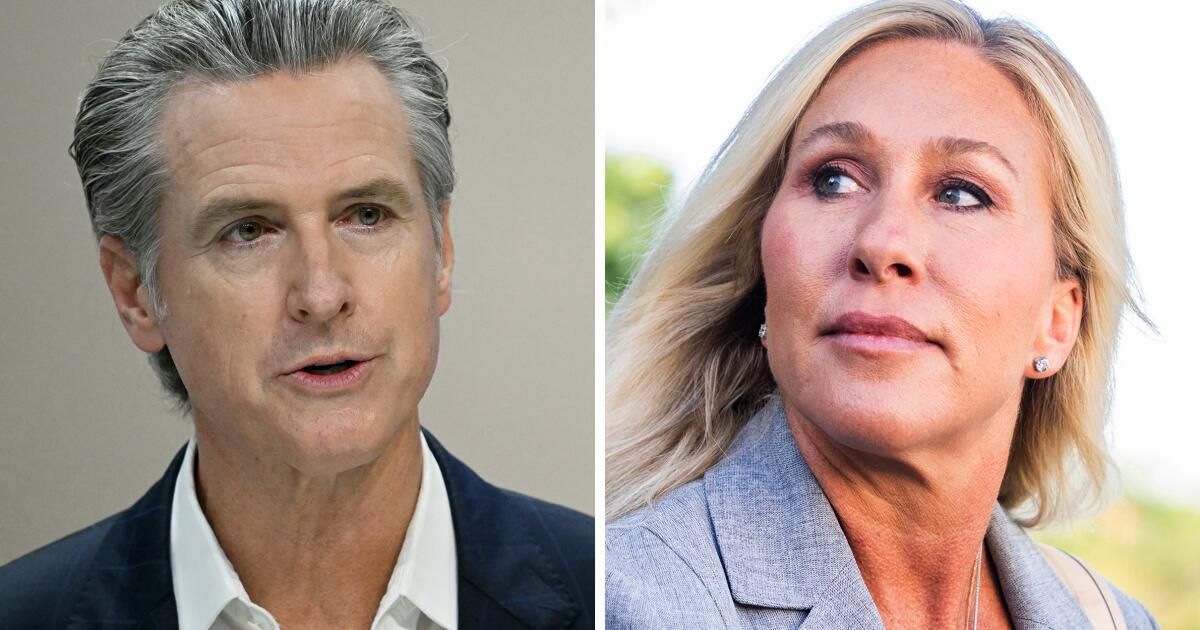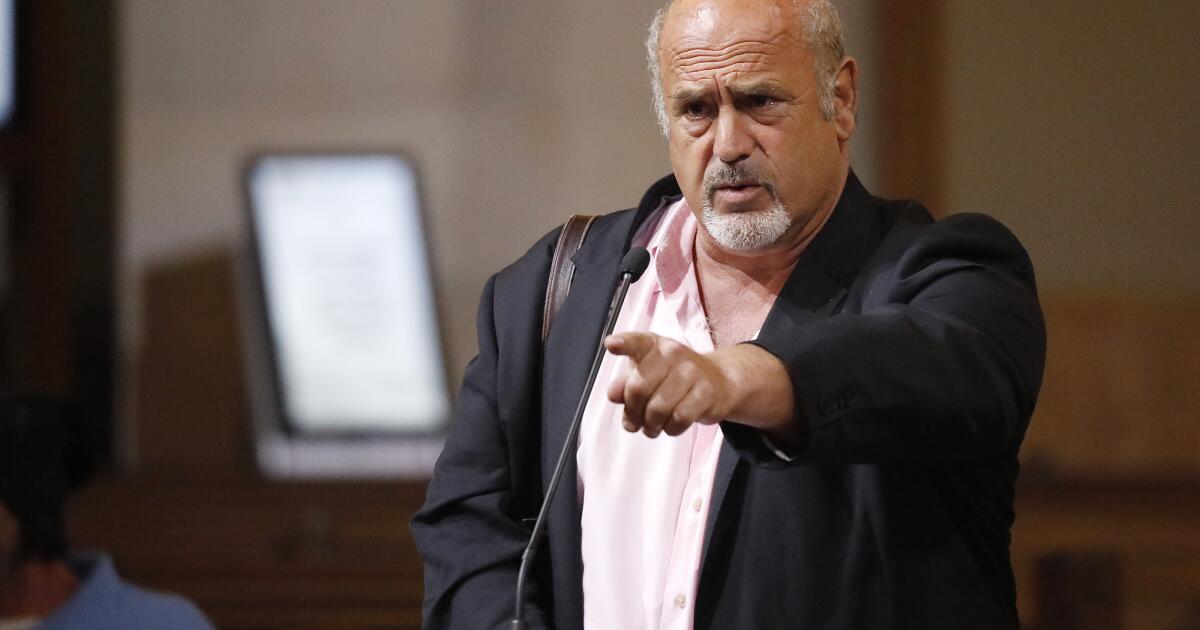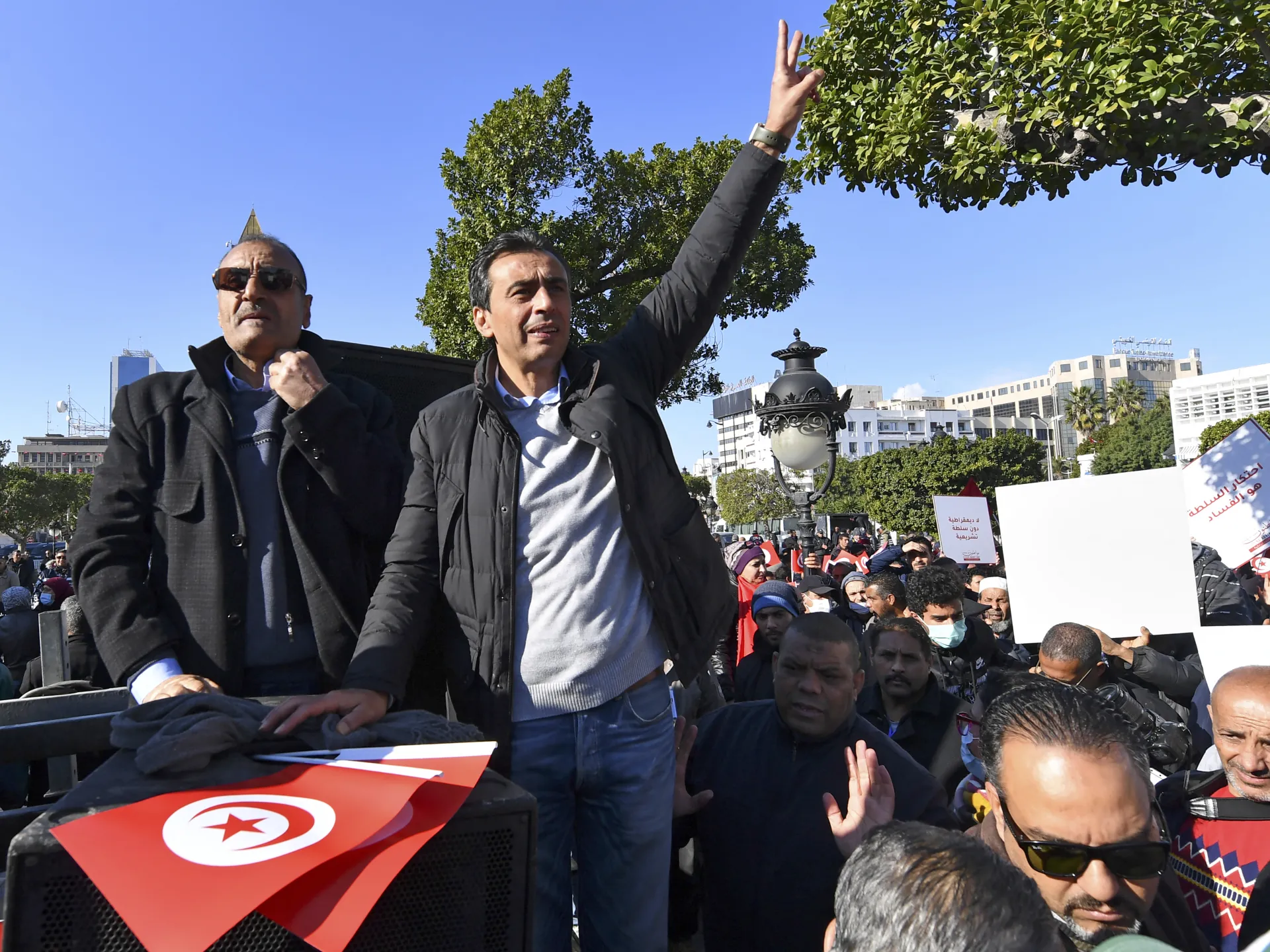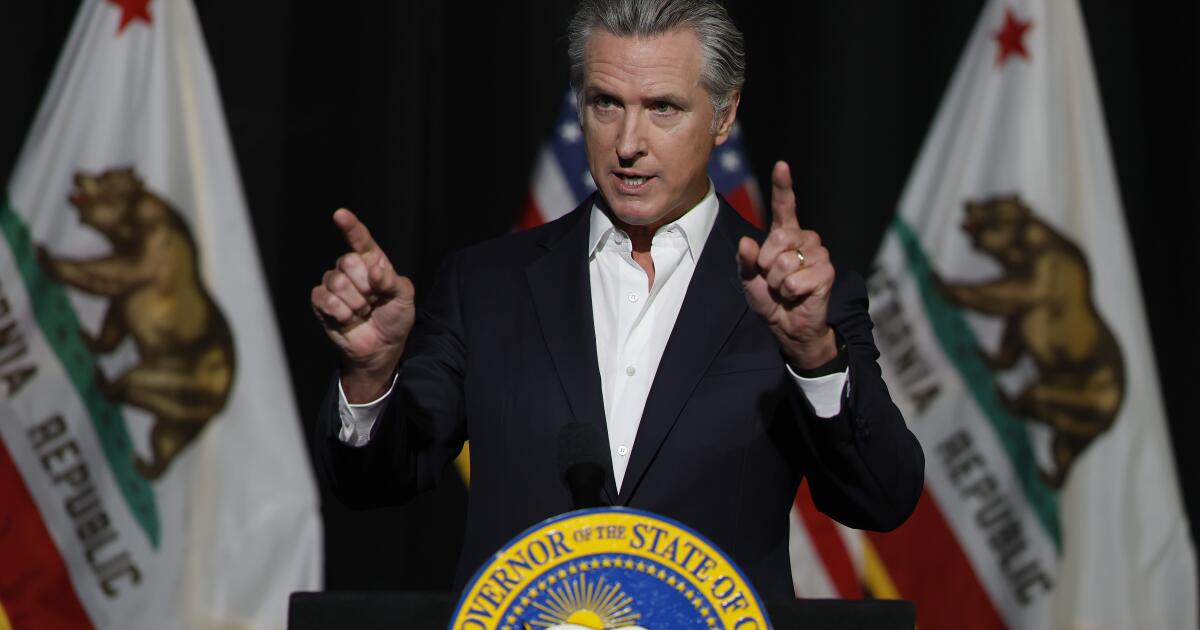Column: Two politicians who impressed in 2025? Gavin Newsom and Marjorie Taylor Greene
She’s a little bit country; he’s a little bit rock ‘n’ roll.
And me? I’m a little bit stunned. Two politicians have emerged, against all odds, to surprise and impress us this year: Gov. Gavin Newsom (D-Calif.) and Rep. Marjorie Taylor Greene (R-Ga.).
You’d be hard-pressed to find two Americans less similar — politically, culturally, geographically, maybe even molecularly. These two occupy opposite poles. She’s NASCAR and CrossFit. He’s electric vehicles and Pinot Noir. They shouldn’t have much in common, but lately, both have done the unthinkable: They’ve taken on President Trump and lived (politically) to tell about it.
Let’s start with Greene because, honestly, she’s more fun.
For years, MTG was seen as an embarrassment. The QAnon congresswoman. The “Jewish space laser” lady. The lawmaker who, just two years prior to winning her House seat, questioned whether a plane really hit the Pentagon on 9/11.
She harassed a then-teenage Parkland survivor and coined the immortal phrase “gazpacho police,” apparently confusing the soup with Nazi secret police.
But then, something strange happened: Greene started making sense. Not “agree with her at dinner” sense, but the “wait, that’s not totally insane” kind.
She blasted Trump’s decision to bomb Iran, which — if you take the “America First” philosophy literally and not just as performance art — is consistent with her beliefs. And in a time when selling out is perceived as being shrewder than standing for something, the mere act of holding a consistent position is a virtue.
MTG also called out her own party for blocking the Epstein files, and volunteered to walk “on the House floor and say every damn name that abused these women.”
And in an act of shocking populist coherence, she ripped into Republicans for letting Obamacare subsidies expire: “Health insurance premiums will DOUBLE,” she thundered on X, adding: “Not a single Republican in leadership talked to us about this or has given us a plan to help Americans deal with their health insurance premiums DOUBLING!!!”
Trump, naturally, took all this personally. “I don’t know what happened to Marjorie,” he said, recently. “Nice woman, but she’s lost her way.” To which Greene, never one to back down, fired back: “I haven’t lost my way. I’m 100% America First and only!”
The thing I’m liking about Greene isn’t just that she’s standing up to Trump — although, I admit, it’s fun to watch. But what’s really refreshing is that she’s a true believer who got elected, got famous and yet continues to believe.
Which brings us to Gavin Newsom.
Newsom has always been the poster boy for everything people hate about California — a man who looks like he was genetically engineered by a Napa Valley venture capitalist to play a slick politician.
The “important” coiffed hair. The smug grin. The French Laundry dinner during COVID-19, while the rest of us were holed up in our houses microwaving Lean Cuisines.
Once upon a time, he and his then-wife, Kimberly Guilfoyle, posed on a rug for a Harper’s Bazaar spread where they were dubbed “The New Kennedys.”
Enough said.
If Greene is the quintessential MAGA mama, Newsom is the slick bro you want to throat punch. But somehow he has had a banner year.
Newsom stood firm against ICE raids and troop deployments in Los Angeles. Then, he trolled Trump with online memes that actually landed.
After Texas Republicans tried to grab five congressional seats for the GOP, Newsom shepherded Prop. 50 through California — an amendment to the state constitution aimed at mitigating Texas’ gerrymandering by redrawing maps to help Democrats even the score.
Then, he waltzed into Houston for a celebratory rally — some political end zone dancing on the opponents’ home turf, just to twist the knife.
Like Greene, the guy has moxie.
And here’s the thing I’m learning from the Trump era: Guts come from the most unlikely places, and looks can be deceiving.
You never know when some heroic-looking leader will fold like a cheap suit, just like you never know when some “heel” out of central casting for villains will turn “face” and rise to the occasion.
I don’t mean to sound naive. I’m not proposing a Newsom-Greene 2028 unity ticket. (Although … tell me you wouldn’t watch that convention.)
The odds are, both of these figures will disappoint me again, probably by next Thursday. Life is complicated, and it’s sometimes hard to disentangle heroism from opportunism.
Indeed, some have speculated that MTG’s sudden streak of independence is the result of Trump putting the kibosh on a “Greene for U.S. Senate” bid in Georgia. And as for Newsom — is his show of toughness an act of patriotism, or a prelude to his own presidential campaign?
Frankly, that’s a difference without a distinction.
For now, here’s what is clear: These two political figures have shown a flash — a glimmer — of something like backbone.
And in the year of our Lord 2025, that’s rarer, and more valuable, than almost any commodity in politics.
Matt K. Lewis is the author of “Filthy Rich Politicians” and “Too Dumb to Fail.”




